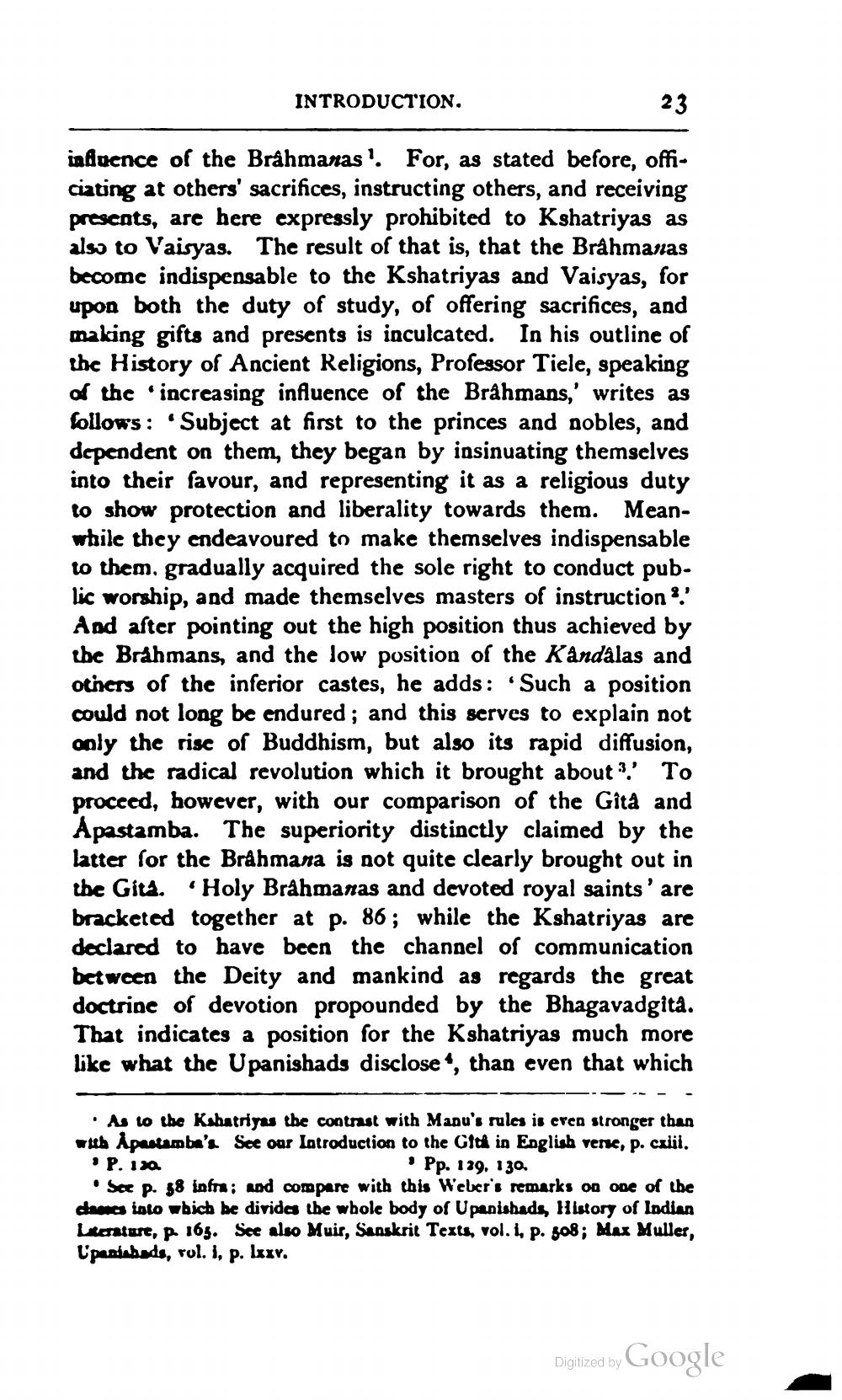________________
INTRODUCTION.
23
influence of the Brahmanas!. For, as stated before, officiating at others' sacrifices, instructing others, and receiving prescats, are here expressly prohibited to Kshatriyas as also to Vaisyas. The result of that is, that the Brahmanas become indispensable to the Kshatriyas and Vaisyas, for upon both the duty of study, of offering sacrifices, and making gifts and presents is iaculcated. In his outline of the History of Ancient Religions, Professor Tiele, speaking of the increasing influence of the Brâhmans,' writes as follows: 'Subject at first to the princes and nobles, and dependent on them, they began by insinuating themselves into their favour, and representing it as a religious duty to show protection and liberality towards them. Meanwhile they endeavoured to make themselves indispensable to them, gradually acquired the sole right to conduct public worship, and made themselves masters of instruction ' And after pointing out the high position thus achieved by tbc Brahmans, and the low position of the Kandalas and others of the inferior castes, he adds: 'Such a position could not long be endured; and this serves to explain not only the rise of Buddhism, but also its rapid diffusion, and the radical revolution which it brought about?' To proceed, however, with our comparison of the Gita and Apastamba. The superiority distinctly claimed by the latter for thc Brahmana is not quite clearly brought out in the Gita. Holy Brahmanas and devoted royal saints' are bracketed together at p. 86; while the Kshatriyas are declared to have been the channel of communication between the Deity and mankind as regards the great doctrine of devotion propounded by the Bhagavadgita. That indicates a position for the Kshatriyas much more like what the Upanishads disclose“, than even that which
- -- -- - - As to the Kshatriyas the contrast with Manu's rules is eren stronger than wuh Apartamba's See our latroduction to the Git in English verse, p. calil. P.ixa
Pp. 129. 130. See p. 38 infr: and compare with this Weber's remarks on one of the dows into which be divides the whole body of Upanishads, History of lodian Lanture, p. 165. See also Muir, Sanskrit Texts, vol. 1, p. 308; Max Muller, L'paninhads, rol. I, p. lxxv.
Digitized by Google




